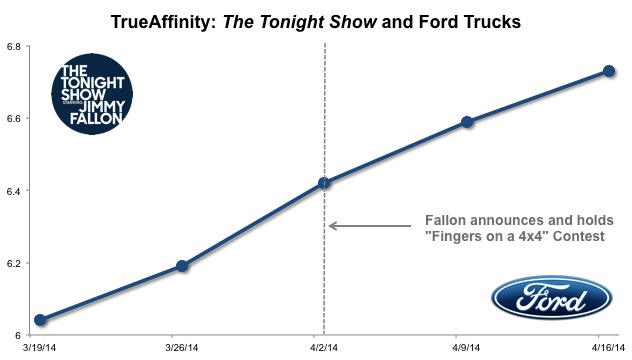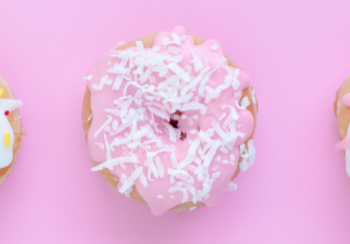Late-Night Changes Represent Brand Opportunities
If you stopped paying attention to late-night television in December 2012, then you might be surprised when you turn on your TV or stream video. Nearly every face fronting late night’s institutions is new, and what’s even more surprising is how much attention the new faces are getting despite TV’s overall ratings declines. As Los Angeles Times writer Stephen Battaglio reported in a recent piece, late-night has become the birthplace of pop culture moments are born, attracting major ad revenue increases.
At Affinity Answers, this made us wonder: how does this attention translate into engagement on social, and what does that mean for advertisers looking to find a home on these shows, particular as a changing of the guard is taking place?
To help us answer these questions, we introduce a new branding metric: TrueAffinity™. TrueAffinity is derived from engagement behaviors on social (retweeting, photo posting, commenting) to measure a brand’s receptivity to other brands, websites, and in our case, TV shows. Viewed another way, TrueAffinity, on a scale from 0-10, measures how good the “fit” is between late-night programs and potential advertisers. A “5” is an average score, but as a brand’s score gets closer to “10”, it becomes harder to make the upward climb.
Let’s start with current ratings champ, NBC’s The Tonight Show Starring Jimmy Fallon. While Fallon has been creating hit viral videos since his incarnation of Late Night, his success in the “big league” 11:35 time slot was immediate and sustaining following his succession of Jay Leno in February 2014. The increase in ad revenue for network late-night shows, as the Times piece reports, has been largely driven by Fallon, and this also correlates with social engagement. An average of TrueAffinity™ for the top engaged brands with Tonight on social media registers at 8.6; by comparison, The Tonight Show with Jay Leno’s average TrueAffinity™ was 8.1 in his final week as host. This difference is even starker when comparing only the digital affinities of Fallon (8.5) and Leno (7.5).
This success has translated into success for Fallon’s advertisers as well. One of his first integrations, Fingers on a 4×4, in which Ford sales consultants competed for the chance to sell Fallon an F-150, proved to show increased affinity between The Tonight Show and Ford Trucks.
It’s important to note that success stories are not restricted to Fallon or paid advertisers. Over Fallon’s entire tenure, the show’s TrueAffinity with sites like College Humor and BuzzFeed, which regularly host clips from Tonight, has grown substantially. Fallon’s ABC rival Jimmy Kimmel Live!, which also has a long-standing reputation for buzzworthy YouTube clips, recently saw a 12% jump week-over-week in its TrueAffinity with Tinder after Kelly Clarkson appeared singing profiles from the dating app.
How should advertisers approach a new entry like The Late Show with Stephen Colbert using TrueAffinity?
- Plan: Which brands have high TrueAffinity with Colbert? While the show does not premiere until next week, brand affinities are surfacing for the new program. A sponsor of The Colbert Report, Doritos, has an above-average TrueAffinity (7.1), but La-Z-Boy is in an even better position (8.1) to leverage its recent mention by Colbert when he came to Monroe, MI (the site of its headquarters) to guest host a local cable access show.
- Activate: How does La-Z-Boy put this insight to use, beyond advertising on or integrating itself into the show? If they are running a display campaign, they can buy the related Colbert Report Affinity Answers segment on the Oracle BlueKai exchange, or use keywords with high affinity to The Late Show for social or search campaigns. Alternatively, La-Z-Boy can also target high-affinity mobile apps and games.
- Measure: Once La-Z-Boy has run its campaign, they can measure how its TrueAffinity with Colbert has grown or how it staved off its competitors.
How will your brand make use of its own TrueAffinity? Contact us at audiences@affinityanswers.com.



